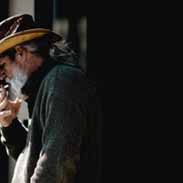Body Mechanics: Balancing Strength and Stamina in Massage Therapy.
Unlock all answers in this set
Unlock answersquestion
Body Mechanics
answer
The use of postural techniques, foot stances, leverage techniques, and other elements to deliver massage therapy and related bodywork methods with efficiency and the least amount of trauma to the therapist.
question
Western culture
answer
tends to focus on physical strength and stamina
question
Eastern culture
answer
tends to focus on balance and the ability to become centered.
question
RMIs
answer
injuries are most often caused by chronic misuse of the body (i.e., poor body mechanics). The second most common reason why therapists leave the profession is injury.
question
RSIs
answer
pain and weakness in the arm, wrist and /or hand. symptoms and related damage can progress unless inefficient body mechanics or repetitive strain is altered. examples: carpal tunnel syndrome; cubital tunnel syndrome; thoracic outlet syndrome; De Quervain tenosynovitis; Tennis elbow (lateral epicondylitis) and Golfer's elbow (medial epicondylitis).
question
Essential elements of body mechanics
answer
Strength, stamina, stability, breathing, balance and centeredness
question
Moderate physical activity
answer
includes walking, biking, swimming and gardening. According to the American College of Sports Medicine and the American Heart Association, the current recommendations is 30 to 60 minutes of this activity daily.
question
triangle
answer
The most structurally stable base. The structure of the foot produces three arches that resemble a geodesic dome. The three bony points of contact with the ground are: calcaneal tuberosity, head of the first metatarsal and head of the fifth metatarsal, they form the shape of a triangle.
question
Foundation of massage
answer
Structured breathing, according to William Barry, author and instructor. Proper breathing technique enhances mental and physical health, thereby positively affecting the quality of massage.
question
Hara
answer
Japanese term for lower abdomen. The ancient center of gravity. This area is a topographic and meditative point of reference known for thousands of years as the center of physical and spiritual balance.
question
dan tien
answer
Chinese term for the center of gravity, the point at which the body is balanced, is generally an inch or two below and behind your naval.
question
bow stance
answer
Also known as the archer stance or lunge position. This massage technique is used when excursion is required. Leading foot points straight forward and the other pointing in the direction the therapist's body is moving (trailing foot). Your whole body follows the direction of the leading foot.
question
Horse stance
answer
Also known as the warrior stance, this stance is used to perform massage techniques that traverse relatively short distances, such as petrissage and most friction strokes. Feet just beyond hip distance with toes pointing forward, knees slightly flexed. back straight and pelvis tilted posteriorly. While moving side to side, shift your weight from one glueteal muscle group to the other as your hands move across the client's skin. If a lifting or lowering action is needed, raise or lower your body by extending and flexing your knees and keeping your back straight.
question
Table height
answer
Allows you to use leverage to increase pressure without compromising body mechanics. This is determined by several factors: your height, the technique or method you are using, the position of the client, and the client's girth. Two generally accepted methods are used to determine table height. Take care to relax your shoulders fully to get an accurate measurement: 1. stand alongside the massage table with arms to our sides and make a fist with your hand. Table height is where the table touches your fist or first knuckles. 2. Stand alongside the massage table, arms at your sides, with wrist and fingers extended. The height where your fingertips brush slightly against your table represents an appropriate table height. If arms or shoulders feel achy, table is too high. If your lower back feels stiff, your table is too low or you might be bending your back instead of knees and hips.
question
St John method of neuromuscular therapy
answer
a comprehensive program of soft tissue manipulation techniques that balance the central nervous system with the structure and form of the musculoskeletal system. (The study of how form affects function).
question
principles of neuromuscular therapy
answer
1. biomechanics; 2. postural distortion; 3. trigger points; 4. nerve entrapment-nerve compression; and 5. ischemia
question
bolsters
answer
Include pillows and cushions, these assist client comfort by supporting and enabling proper alignment of individual joints which in turn help muscles relax. The most common areas to use these are the face and ankles and the neck and knees.
question
main client positions
answer
prone (lying face down); supine (lying on back) note supine clients may also be placed in a semireclining position (upper body elevated); side-lying (client lies on left or right side); and seated
question
Draping
answer
covering the body with cloth and allows client to be undressed while receiving massage. The purpose of using a drape are: 1) to provide a professional atmosphere; 2) support the client's need for emotional privacy (modesty) and sense of security; and 3) provide warmth. Two main types of drapes are sheets and towels.



